The taste of home-grown crops is always superior to store-bought produce, but fresh peas straight from the vine taste almost like an entirely different vegetable! They’re a real treat, and they’re an easy garden vegetable for kids to grow. But how to plant peas?
To plant peas, soak seeds 1-2 hours (no longer than 12 hours), then plant in rows, 1-2 inches deep & 6-12” apart. Keep soil moist but not soggy. Peas can be planted in fall for a spring crop, & in spring for a fall crop. Depending on the variety, peas will be ready to harvest in 50 to 80 days.
Reserve a space for a pea trellis in your veggie garden, this spring or fall. From the traditional shelling peas, to snow peas that sometimes don’t make it into the kitchen before being crunched on, peas are an easy to grow, versatile crop that delivers a high reward for effort.
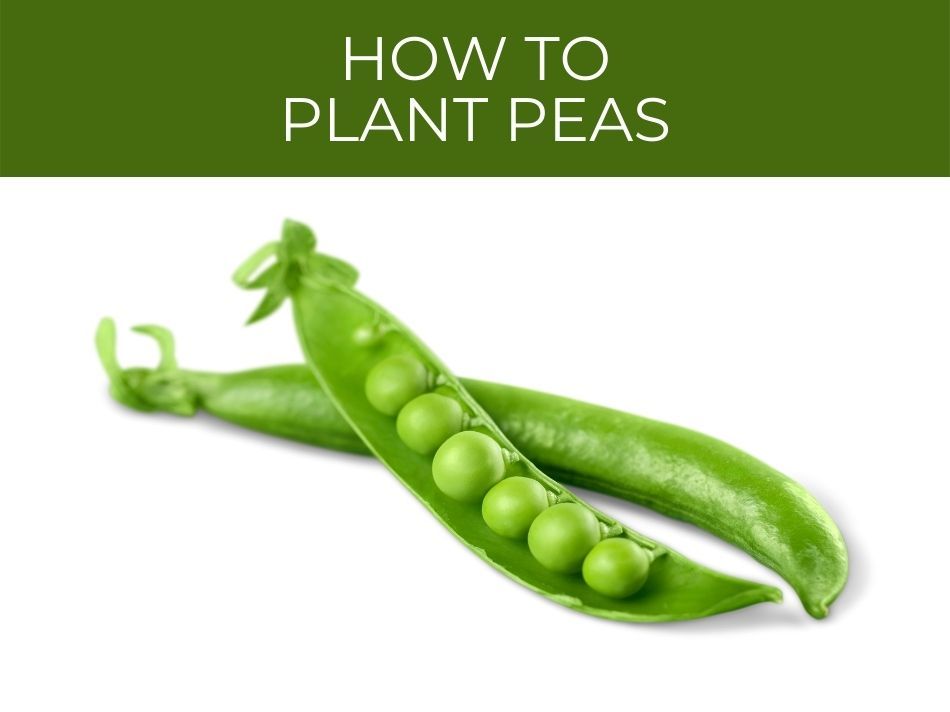
How to plant peas
Peas are very straightforward to grow and can be planted directly from seed.
Before you start, to avoid disturbing their shallow roots, set up a frame or trellis for the peas to climb up.
Start your peas in an area where they will get partial shade during the hotter months.
Soak the peas overnight to make them swell, and speed up germination when they go in the ground.
Check out the complete article on whether to soak peas & beans before planting.
Peas are prone to rotting and being eaten by wildlife, so the quicker you can get them growing, the better.
Before you plant, set up a frame or trellis for the peas to grow up against, in a sunny spot. Soak pea seeds no longer than 12 hours, to increase the speed of germination. Keep the soil moist but not soggy. Plant seeds 12” apart. Cover with mulch to protect the shallow roots.
Water the peas in, but don’t water them again until the shoots emerge to avoid rot.
As the weather heats up, keep them watered and cover with a layer of mulch to protect the shallow roots.
See this post on automated watering systems.
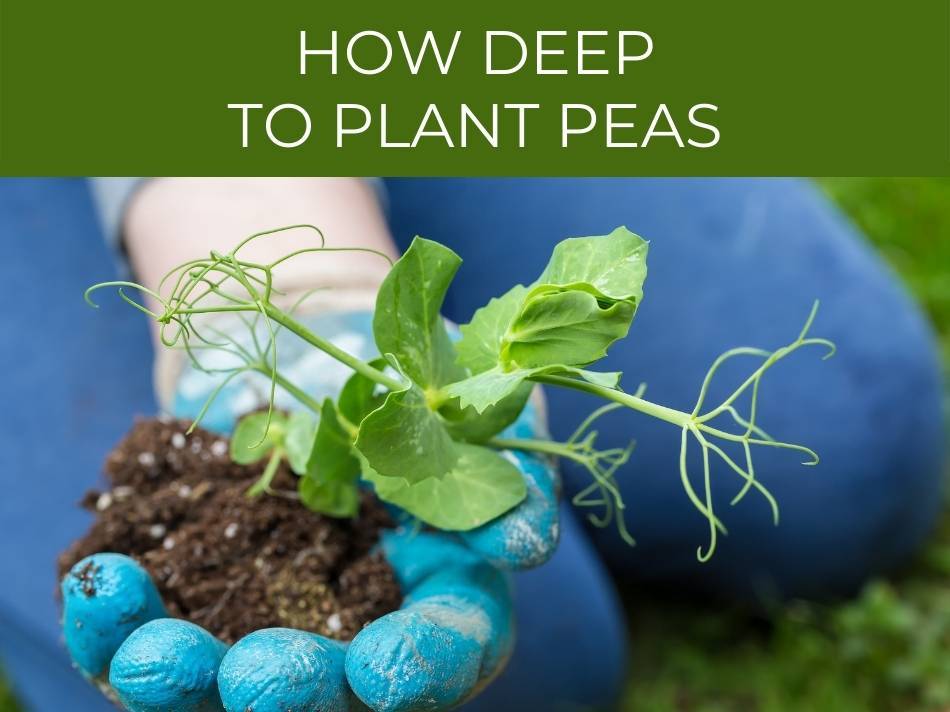
How deep to plant peas
Peas should be planted about two inches deep, to avoid being eaten but shallow enough that they will not rot before the shoot emerges.
A good rule of thumb for planting seeds is to plant about twice the depth of the seed. Peas should be planted about 1-2 inches deep, which is deep enough not to be eaten by foraging birds, but shallow enough that they will not rot in the ground before the shoot emerges.
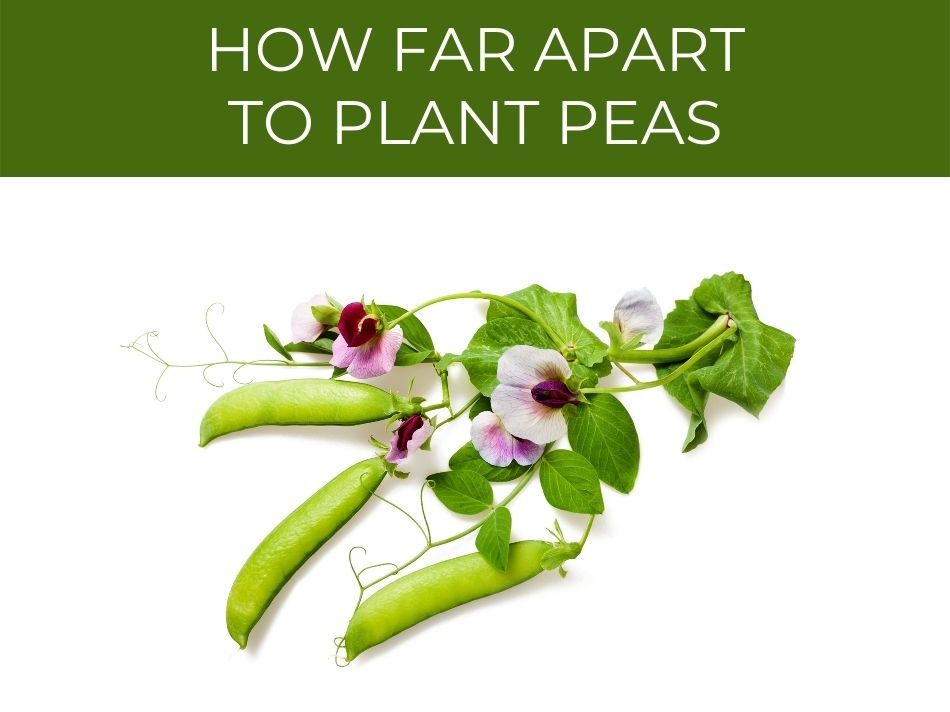
How far apart to plant peas
Peas can be planted quite thickly, about two inches apart.
Peas are traditionally grown in double rows, with about four inches between rows.
Peas are traditionally planted in double rows, spaced about 4-6 inches apart. Within the rows, peas can be planted quite thickly with about 2-4 inches between them. You can also plant 2 peas in each hole to maximize germination rates for your space and offset any that get eaten.
If you have plenty of seeds, you can put two peas into each hole, to off-set any that get eaten by birds or mice.
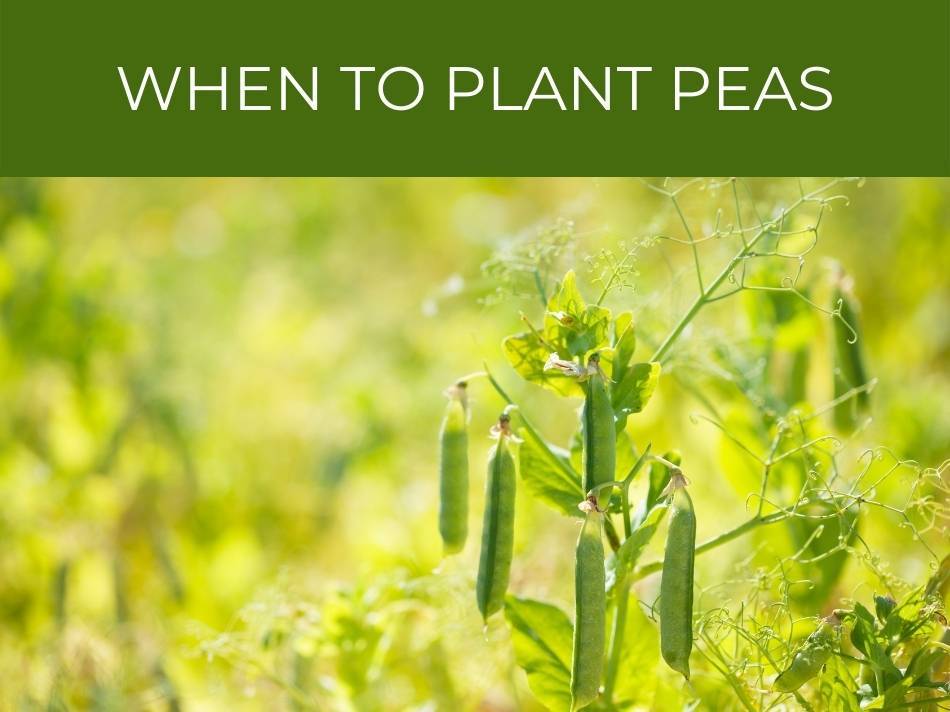
When to plant peas
Peas need to be planted in mild weather, before it gets too hot.
Peas can be planted in the fall for an early spring crop, or in early spring for a fall crop.
Peas planted in spring will need to be kept shaded and well watered to get them through the summer.
Most peas prefer cool weather, & seeds should be sown in fall for an early spring crop, or in spring for a fall crop. Peas can be planted successively throughout mild weather to get a continuous harvest over a longer period.
Pease can be planted successively to give harvest continuously over a longer period.
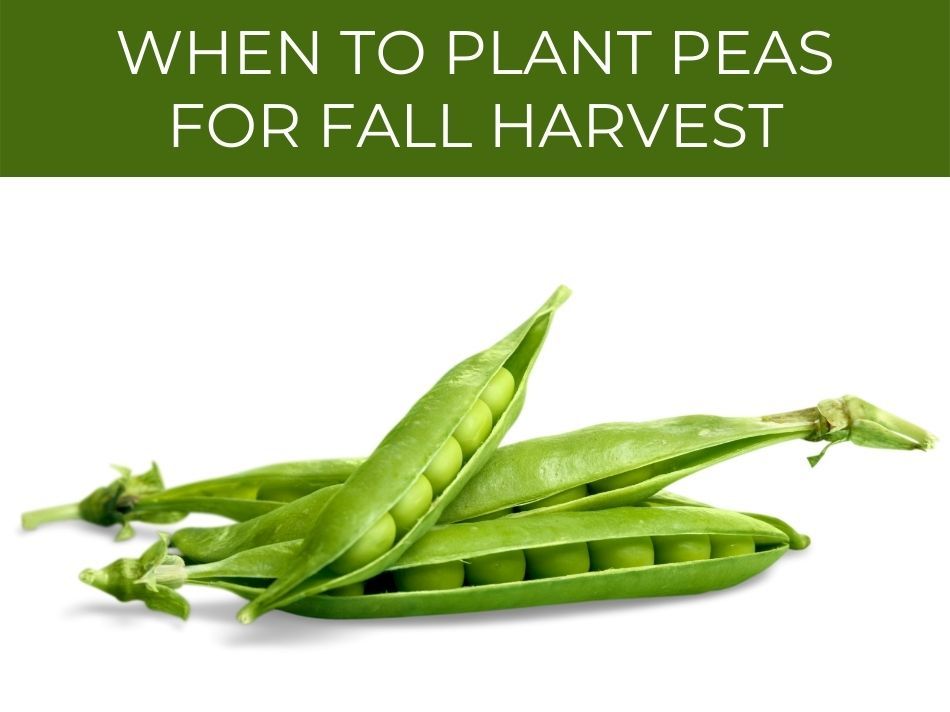
When to plant peas for fall harvest
This is around four to six weeks before the last frost.
For a fall harvest, peas need to be sown in early spring so that the plants can mature enough to withstand the summer heat. Peas should be sown when the ground is workable & warm enough for germination, which is around 4-6 weeks before the last expected frost.
Peas will mature enough to survive the summer heat, and produce a crop in the fall.
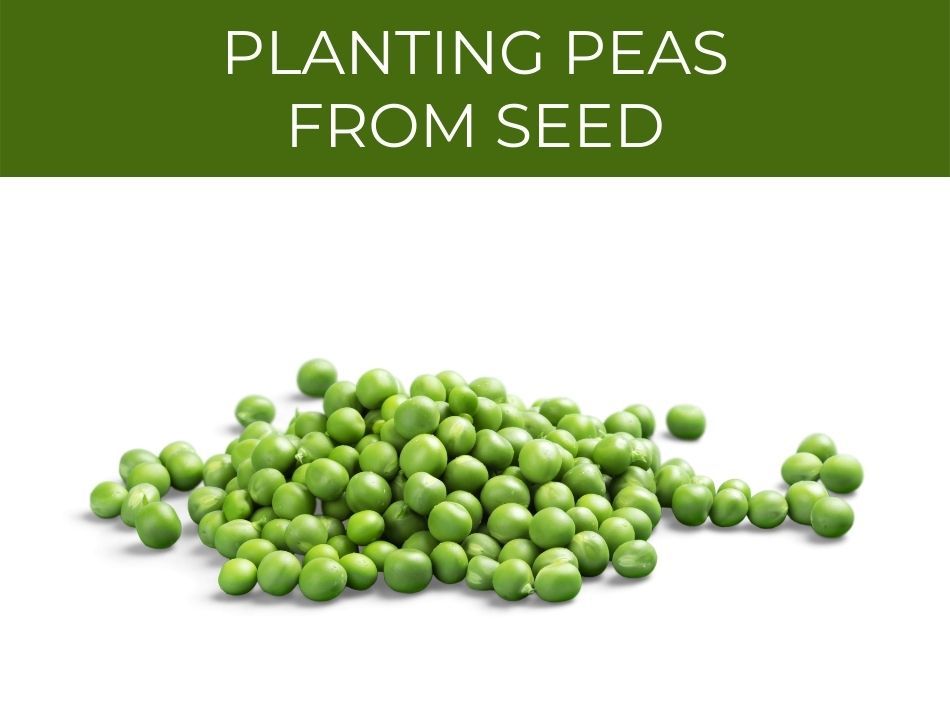
Planting peas from seed
Planting peas from seed is a good activity to ask children to help with, as the seeds are large and easy to handle.
See this post on growing beans – another child friendly garden activity.
Peas can easily be planted from seed & are a popular garden activity with children because they are large and easy to handle. Germination rates are good, but plant some extra as some will be eaten by birds & mice. There are a wide variety of peas available to grow from seed.
There are many different varieties of peas to try, from the traditional large ‘shelling peas’ with an inedible pod, to snow peas and sugar snap peas, which are eaten whole before the peas mature.
To transplant pea seedlings, try growing them in cardboard tubes or egg cartons which can be planted out whole, or growing them in a length of gutter which can then be slid out as a whole row.
Check this post on when to transplant seedlings.
For a fun activity with kids, see how to grow lima beans in a bag.
Find out how much sun peas need.
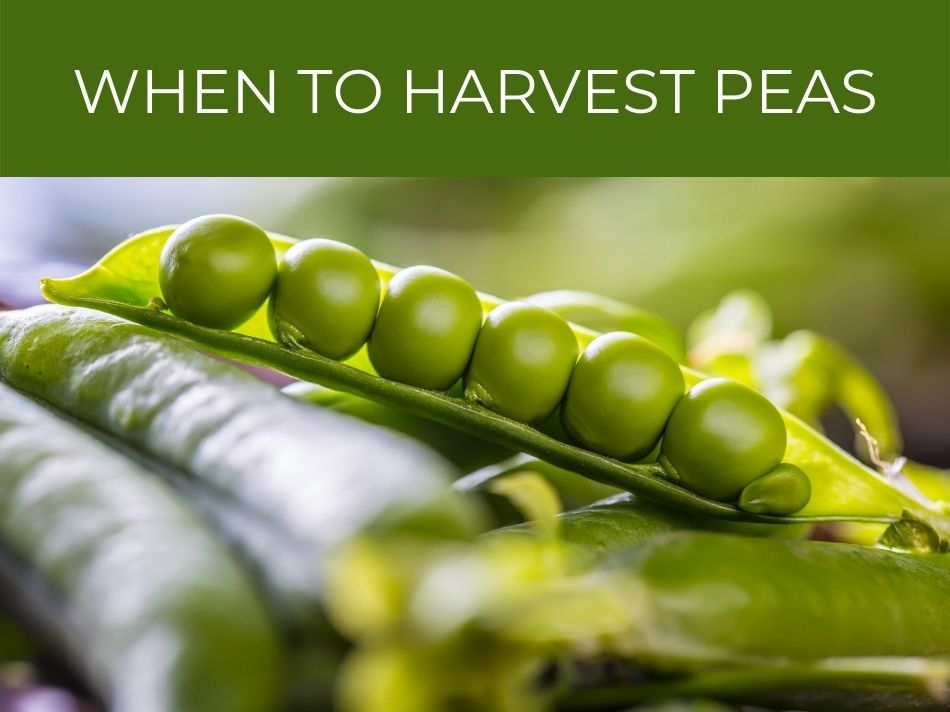
When to harvest peas
Early pea varieties take around 50 days to mature, with shelling peas taking up to 80 days.
Shelling peas, or English peas, should be harvested when the peas plump up and fill the pod, but before the pod starts to split or turn yellow.
Snow peas are harvested well before the peas start to grow, when the pod grows to a couple of inches.
Sugar snap peas are harvested somewhere in-between, when the peas grow into small bumps.
Depending on the variety, peas will take anywhere between 50-80 days to mature. Shelling peas can be harvested when the peas are plump, but before they start to split the pods. Snow peas should be harvested before the peas swell. Sugar snap peas are somewhere between.
All peas should be harvested regularly, as the more they are picked, the more crops they produce.
Peas should be picked as the whole pod, and with the star-shaped leaf at the top (the calyx) left attached.
The shoots and flowers of peas can also be eaten – they taste similar to the peas themselves but are a pretty addition to salads and can be harvested before the peas appear.
Find out if peas & beans are a fruit or vegetable.
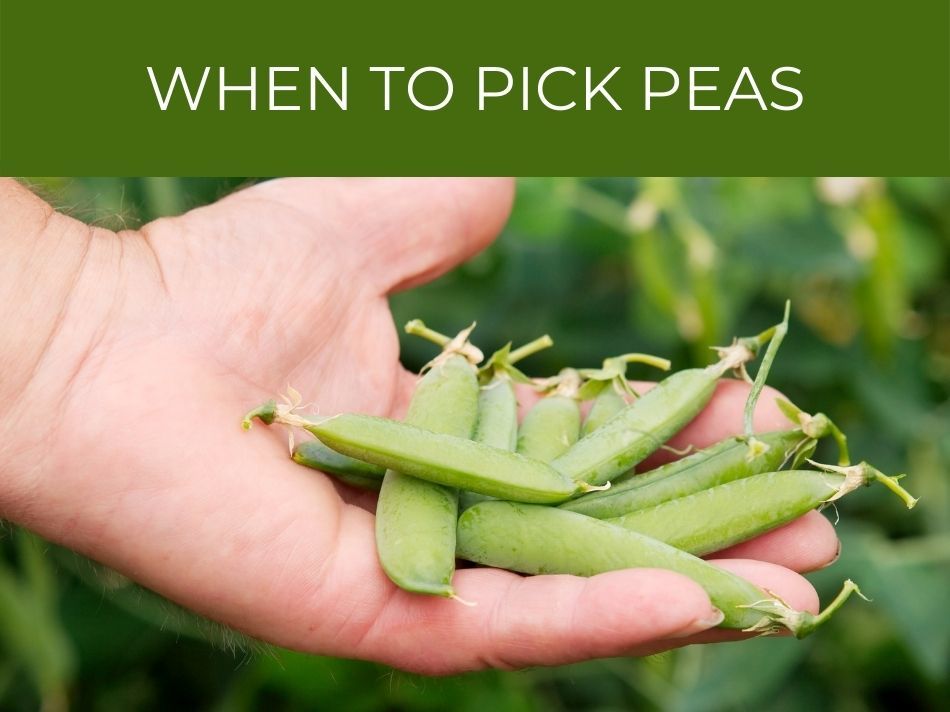
When to pick peas
Peas that have been sown in the fall can be picked in early spring, and are usually one of the first crops of the year.
Peas sown in early spring will be ready to pick in early fall.
Peas that have been sown in the fall will be ready to pick in early spring & are often one of the first crops to mature in the vegetable garden. Peas that have been sown in spring will be ready in early fall when the weather cools. Pick peas first thing in the morning when they’re most crisp.
Peas are at their most crisp first thing in the morning, before they have been exposed to the sun.

Conclusion
Peas are one of the easiest, but most rewarding food crops to grow in the home garden.
Give it a go this year!

